The BLT Built Design Awards catalog showcases the best of 2021 Architecture, Interior Design, Construction Product and Project Management.
The brochure features exclusive interviews of Saartje van der Made, Partner at Benthem Crouwel Architects and winner of the “Architectural Design of the Year“; Robert Yuen, founder of Monograph a practice operations platform, winner of the “Project Management of the Year” and Zhike Wang & Xiaoshui Li who received the title of “Interior Design of the Year” for their exhibition design called “Naturalism Creates a Magic Wonderland”.
The catalog is available to purchase on Amazon and can be downloaded on the BLT Design Awards website.
BLT Built Design Awards is a global reference in the construction industry, representing the best of Architecture, Interior Design, Construction Product Design and Project Management.
Zurich, Switzerland – The 2022 BLT Built Design Awards is now accepting entries into its four major categories, from architectural design, interior design, construction products design and project management. It welcomes submissions from professional, emerging designers and students until the 9th of October 2022, the program promises to attract entries from some of the most forward-thinking firms from all around the world!
The BLT Built Design Awards honor the expertise of all professionals involved in the realization of outstanding projects. The prize encompasses all forms of buildings, projects, and infrastructures that cope with today’s urbanization challenges and inspire the next generations.
This annual program aims to celebrate Projects, People, and their passion for the industry, through our rigorous judging process, we recognize those that have gone above and beyond.
In 2021, the awards received over 450 submissions from 54 countries, the range of work was as astounding as always, with honorees including Benthem Crouwel Architects with The Dutch Charity Lotteries office in The Netherlands, Foshan Topway Design (China) with the exhibition “Naturalism creates a magic wonderland” inspired by “The Antelope Valley” a natural landmark in California, USA. The Silicon Valley tech company Monograph won the “Project Management of the Year” for Resource by Monograph.
Other honorees from the first edition of the BLT Awards included Stonehill Taylor (USA), Sanjay Puri Architects (India), Assembledge+ (USA), Zaha Hadid Architects (USA), Measured Architecture (Canada), Querkraft architects with the Austria Dubai Expo Pavilion.
All awarded projects, products and designs were celebrated online at the 2021 BLT Built Design Awards Winners Celebration. The announcement can still be viewed on the BLT Awards website: https://bit.ly/3HAdkEK
The 2022 jury, composed of 40 experienced architects, designers, developers, academics and media representatives will select the winners in each category end of October 2022. Past jurors have included Ole Gustavsen, Rector at the Oslo School of Architecture and Design (AHO), Kamille Glenn, Founder of dsgnrswrkshp, Kourosh Salehi, Design Director at LWK + PARTNERS, Phill Mashabane, Principal and Owner Mashabane Rose and Associates. The 2022 jury members will be announced later this year.
The “Design of the Year” winners, will receive the coveted BLT Design Awards Trophy, their winning projects will be showcased to the global audience and be featured in the Annual BLT Awards catalog. Winning the BLT Built Design Awards is an opportunity to step into the global spotlight, elevate the company profile, and raise public awareness. Enter here!
Registration for the BLT Built Design Awards is now open and will close on October 9th, 2022. Those who register before April 30th, 2022; will receive an early bird discount of 10%.
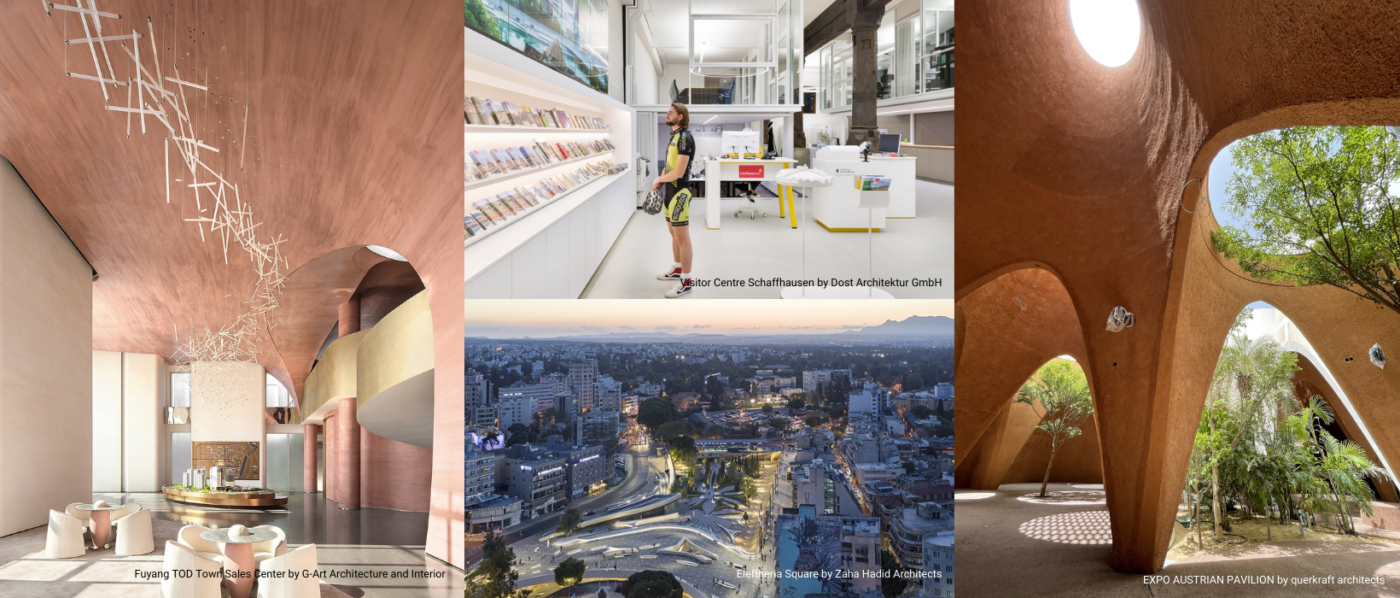
________________________________________________________________________________________________________________________________________________
Die BLT Built Design Awards sind eine globale Referenz in der Bauindustrie und repräsentieren das Beste aus Architektur, Innenarchitektur, Bauproduktdesign und Projektmanagement.
Zürich, Schweiz – Die BLT Built Design Awards 2022 nehmen ab sofort Bewerbungen in den vier Hauptkategorien Architektur, Innenarchitektur, Bauprodukte und Projektmanagement entgegen. Bis zum 9. Oktober 2022 können professionelle, aufstrebende Designer und Studenten ihre Entwürfe einreichen. Das Programm verspricht, Beiträge von einigen der fortschrittlichsten Firmen aus der ganzen Welt anzuziehen!
Die BLT Built Design Awards würdigen die Expertise aller Fachleute, die an der Realisierung herausragender Projekte beteiligt sind. Der Preis umfasst alle Formen von Gebäuden, Projekten und Infrastrukturen, die den Herausforderungen der heutigen Urbanisierung gerecht werden und die nächsten Generationen inspirieren.
Dieses jährliche Programm zielt darauf ab, Projekte, Menschen und ihre Leidenschaft für die Branche zu würdigen. Durch unser strenges Bewertungsverfahren zeichnen wir diejenigen aus, die mehr als das Übliche getan haben.
Im Jahr 2021 wurden mehr als 450 Arbeiten aus 54 Ländern eingereicht. Die Bandbreite der Arbeiten war wie immer erstaunlich, darunter Benthem Crouwel Architects mit dem niederländischen Lotteriebüro The Dutch Charity Lotteries in den Niederlanden, Foshan Topway Design (China) mit der Ausstellung “Naturalism creates a magic wonderland”, inspiriert von “The Antelope Valley”, einem natürlichen Wahrzeichen in Kalifornien, USA. Das Silicon Valley Tech-Unternehmen Monograph hat den Preis “Projektmanagement des Jahres” für Resource by Monograph gewonnen.
Weitere Preisträger der ersten Ausgabe der BLT Awards waren Stonehill Taylor (USA), Sanjay Puri Architects (Indien), Assembledge+ (USA), Zaha Hadid Architects (USA), Measured Architecture (Kanada), Querkraft architects mit dem Austria Dubai Expo Pavilion.
Alle ausgezeichneten Projekte, Produkte und Entwürfe wurden online auf der BLT Built Design Awards Winners Celebration 2021 gefeiert. Die Ankündigung kann immer noch auf der Website der BLT Awards eingesehen werden: https://bit.ly/3HAdkEK
Die Jury 2022, bestehend aus 40 erfahrenen Architekten, Designern, Entwicklern, Akademikern und Medienvertretern, wird Ende Oktober 2022 die Gewinner in jeder Kategorie auswählen. Zu den früheren Juroren gehörten Ole Gustavsen, Rektor der Oslo School of Architecture and Design (AHO), Kamille Glenn, Gründer von dsgnrswrkshp, Kourosh Salehi, Design Director bei LWK + PARTNERS, Phill Mashabane, Principal und Eigentümer von Mashabane Rose and Associates. Die Mitglieder der Jury 2022 werden im Laufe des Jahres bekannt gegeben.
Die Gewinner des “Design of the Year” erhalten die begehrte BLT Design Awards Trophäe, ihre ausgezeichneten Projekte werden dem weltweiten Publikum vorgestellt und im jährlichen BLT Awards Katalog veröffentlicht. Der Gewinn des BLT Built Design Awards ist eine Gelegenheit, ins weltweite Rampenlicht zu treten, das Profil des Unternehmens zu schärfen und die öffentliche Aufmerksamkeit zu erhöhen. Hier mitmachen!
Die Anmeldung für die BLT Built Design Awards ist jetzt geöffnet und endet am 9. Oktober 2022. Diejenigen, die sich vor dem 30. April 2022 anmelden, erhalten einen Frühbucherrabatt von 10%.
Für weitere Informationen über die BLT Built Design Awards besuchen Sie bitte http://www.bltawards.com.
________________________________________________________________________________________________________________________________________________
Les BLT Built Design Awards sont une référence mondiale dans le secteur de la construction, représentant le meilleur de l’architecture, du design d’intérieur, de la conception de produits de construction et de la gestion de projets.
Zurich, Suisse – La version 2022 des BLT Built Design Awards acceptent dès à présent les candidatures dans ses quatre catégories principales, à savoir le design architectural, le design d’intérieur, le design de produits de construction et la gestion de projet. Les candidatures des professionnels, des designers émergents et des étudiants sont les bienvenues jusqu’au 9 octobre 2022. Le programme promet d’attirer les candidatures de certaines des entreprises les plus avant-gardistes du monde entier !
Les BLT Built Design Awards honorent l’expertise de tous les professionnels impliqués dans la réalisation de projets exceptionnels. Le prix englobe toutes les formes de bâtiments, de projets et d’infrastructures qui répondent aux défis actuels de l’urbanisation et inspirent les prochaines générations. Ce programme annuel vise à célébrer les projets, les individus et leur passion pour ce secteur. Grâce à notre processus d’évaluation rigoureux, nous reconnaissons ceux qui se sont surpassés.
En 2021, les prix ont reçu plus de 450 candidatures provenant de 54 pays. L’éventail des travaux était stupéfiant, avec des lauréats comme Benthem Crouwel Architects pour le bureau de la Dutch Charity Lotteries aux Pays-Bas, Foshan Topway Design (Chine) pour l’exposition “Naturalism creates a magic wonderland” inspirée par “The Antelope Valley”, un site naturel en Californie, aux États-Unis. La société technologique de la Silicon Valley Monograph a remporté le prix de la “Gestion de projet de l’année” pour le projet “Resource by Monograph”.
Parmi les autres lauréats de la première édition des prix BLT Awards, citons Stonehill Taylor (États-Unis), Sanjay Puri Architects (Inde), Assembledge+ (États-Unis), Zaha Hadid Architects (États-Unis), Measured Architecture (Canada), Querkraft architects avec le pavillon Austria Dubai Expo.
Tous les projets, produits et designs récompensés ont été célébrés en ligne lors de la célébration des gagnants de la version 2021 des BLT Built Design Awards. L’annonce peut toujours être consultée sur le site des Prix BLT : https://bit.ly/3HAdkEK.
Le jury 2022, composé de 40 architectes, designers, développeurs, universitaires et représentants des médias expérimentés, sélectionnera les lauréats de chaque catégorie fin octobre 2022. Parmi les jurés précédents, citons Ole Gustavsen, recteur de l’école d’architecture et de design d’Oslo (AHO), Kamille Glenn, fondateur de dsgnrswrkshp, Kourosh Salehi, directeur de la conception chez LWK + PARTNERS, Phill Mashabane, directeur et propriétaire de Mashabane Rose and Associates. Les membres du jury de 2022 seront annoncés plus tard dans l’année.
Les lauréats du “Design of the Year” recevront le trophée convoité des BLT Design Awards, leurs projets gagnants seront présentés au public mondial et figureront dans le catalogue annuel des BLT Awards. Remporter les BLT Built Design Awards est l’occasion d’être sous les feux de la rampe, d’améliorer le profil de l’entreprise et de sensibiliser le public. Inscrivez-vous ici !
Les inscriptions pour les BLT Built Design Awards sont maintenant ouvertes et se termineront le 9 octobre 2022. Les personnes qui s’inscrivent avant le 30 avril 2022 bénéficieront d’une réduction de 10 % pour les inscriptions anticipées.
Pour plus d’informations sur les prix BLT Built Design Awards, veuillez consulter le site http://www.bltawards.com.
Founded in 2019 by three architectural designers, Monograph is a practice operations platform transforming the way AEC professionals oversee projects, timesheets, and forecasts in one, integrated and simple interface. Winner of the BLT Awards 2021 – Project Management of the Year, we seated with Robert Yuen while he shared with us the success story of Monograph.
Could you tell us a little about your professional journey?
“I studied architecture at the University of Illinois at Chicago and eventually earned a dual master’s degree in Architecture and Digital Technologies at the University of Michigan. After graduation, I worked with some of the industry’s most renowned firms and designers including SOM, Holabird & Root, and Blu Homes. At this point, I had already begun building Section Cut, a digital collection of design references and resources for architects that was beginning to flourish into a new model of design education. When I contracted software designers Dixon & Moe to enhance Section Cut’s functionality, they invited me to join their firm, and I worked on designing software solutions for architecture, engineering, manufacturers, and construction clients. I joined the team to begin working on Monograph, a suite of resources and tools designed specifically for architects and became a partner of the firm in 2016. Eventually, this led to myself and two close peers turning Monograph into a unique platform of its own to address issues we saw within our industry.”
Together with Moe Amaya, Alex Dixon, you founded Monograph in 2019, why start a new company? What did you envision back then for Monograph?
“While working as an architect in Chicago, I would regularly meet with other friends in the architecture field for happy hour. We always talked about the same problems and the lack of tools for running an effective business. In 2019, after hearing people talk about the same issues, myself, Alex Dixon, and Moe Amaya—all architects by trade that could build software—created Monograph. We created a practice operations platform tailored to the architecture, design, and engineering industries.
Back then, we envisioned Monograph as an answer to a problem many architects face, mainly working extra hours to keep up with a multitude of deadlines. We became committed to finding an answer. Today, the cloud-based system is intuitively designed for AEC professionals to oversee projects, timesheets, and forecasts in one simple and integrated interface to inform decisions about their business and projects in real-time.”
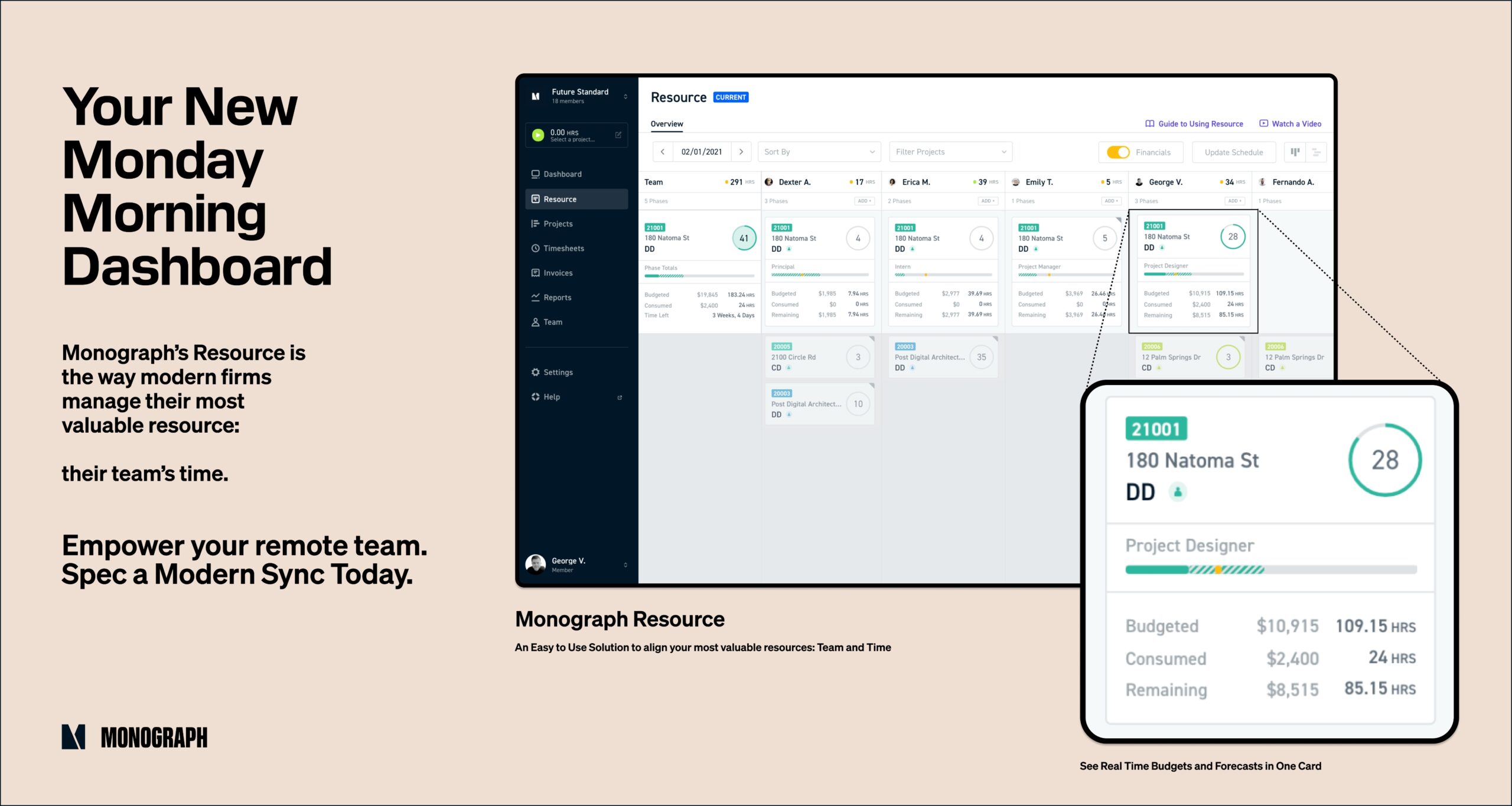
Can you summarize what is “Resource by Monograph”?How would it support Architects and make their life much easier?
“Resource is a tool by Monograph that allows users to see their firm’s activity for the coming week on a single page. All of the projects they’re working on, projected hours that team members plan to work, hours they’ve already worked, and all of the money that has been consumed, budgeted, and is remaining. But Resource isn’t just a tool to look at—you can reallocate and adjust time for anyone on any project, ad-hoc. Firms can also add and remove people from projects, and are simultaneously able to see the impacts of that decision on current projections. It allows firms to focus less on meetings, saving both time and money and ultimately freeing up more time for designing.”
What was the most important for you when developing this new software?
“The most important factor for us when developing Resource was streamlining the weekly kick-off meeting that is standard at many firms. The ability to more accurately track and plan for the days ahead at the start of the week allows firms to maximize efficiency and spend more time bringing their ideas to life.”
In the company’s recent news, you have raised $20 million in its Series B funding round, bringing a new investor Tiger Global. Congratulations! Today, what are your priorities for Monograph?
“Thank you so much! We’re thrilled about the second round of funding and are excited for the coming year. Today, our priorities for Monograph include building on the strong foundation of the company culture that we’ve created over the last few years while keeping our ears to our customers. Remaining in constant dialogue with our users allows us to troubleshoot, ideate, and introduce features that better address problems at a much faster rate. We hope to continue providing our users with awesome solutions to assist them with their day-to-day operations.”
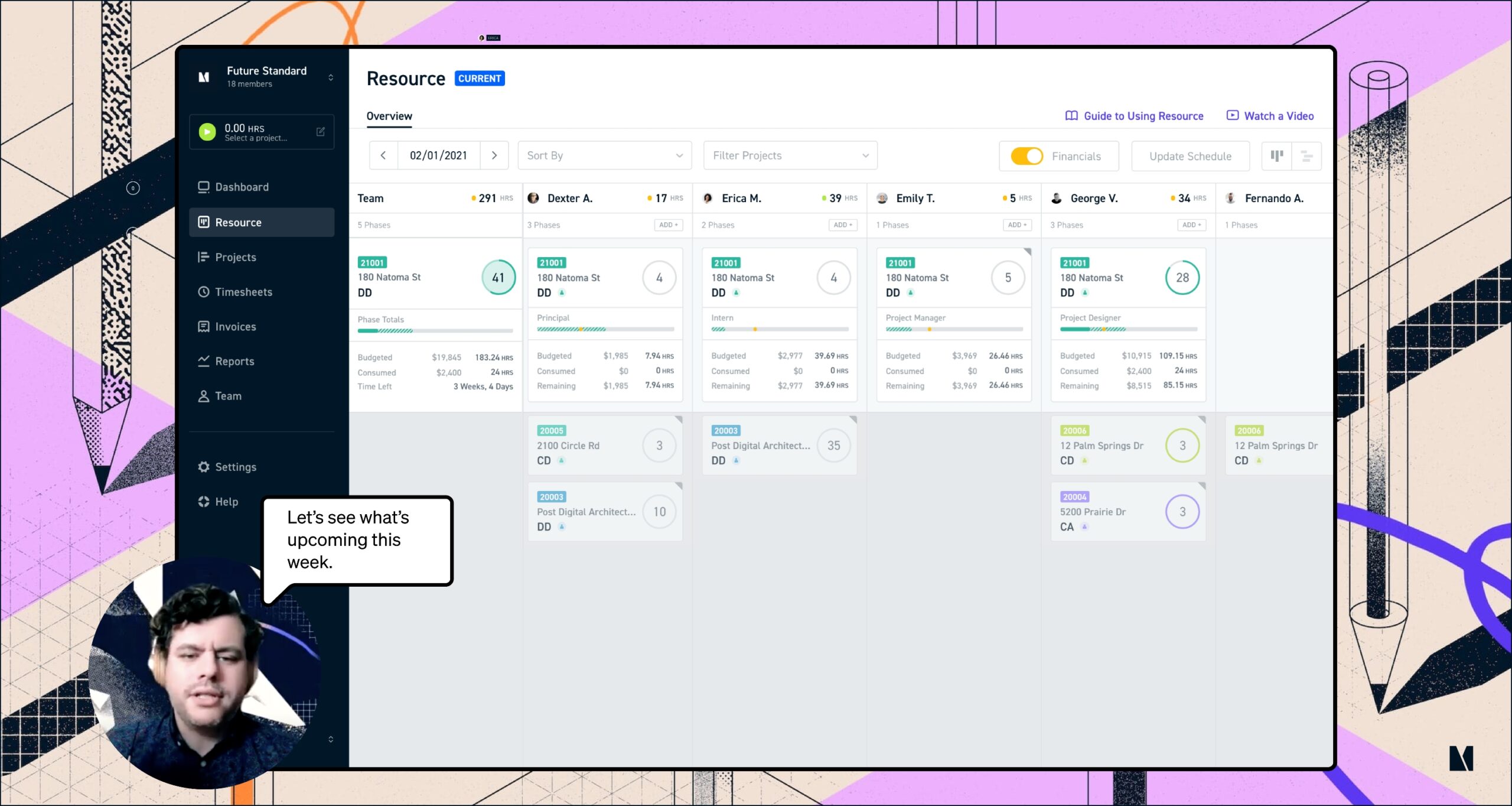
Do you have any upcoming projects or new features to be released that you’re able to tell us about?
“Monograph has a lot in the pipeline for 2022. One of the upcoming events we’re most excited for is Section Cut Two, our second annual virtual conference for firm owners, office operations, and project managers across architecture, landscape architecture, interior design, and engineering. Scheduled for March 8-10, the conference is dedicated to the stories of leaders who are innovating in the realm of practice operations. We are beyond excited for the second annual Section Cut, and hope to see you there!”
Lastly, what can we wish you for the future?
“The future is bright for Monograph. We hope to continue building our team and introducing innovative tools to further assist firms with their practice operations. Monograph has grown from eight to 40 team members in the past year, and we recently hired Ernie Miller as our new Head of Engineering. Additionally, we recently closed $20-million Series B funding, which will further assist our acceleration as the premier practice operations platform for the architecture community.”
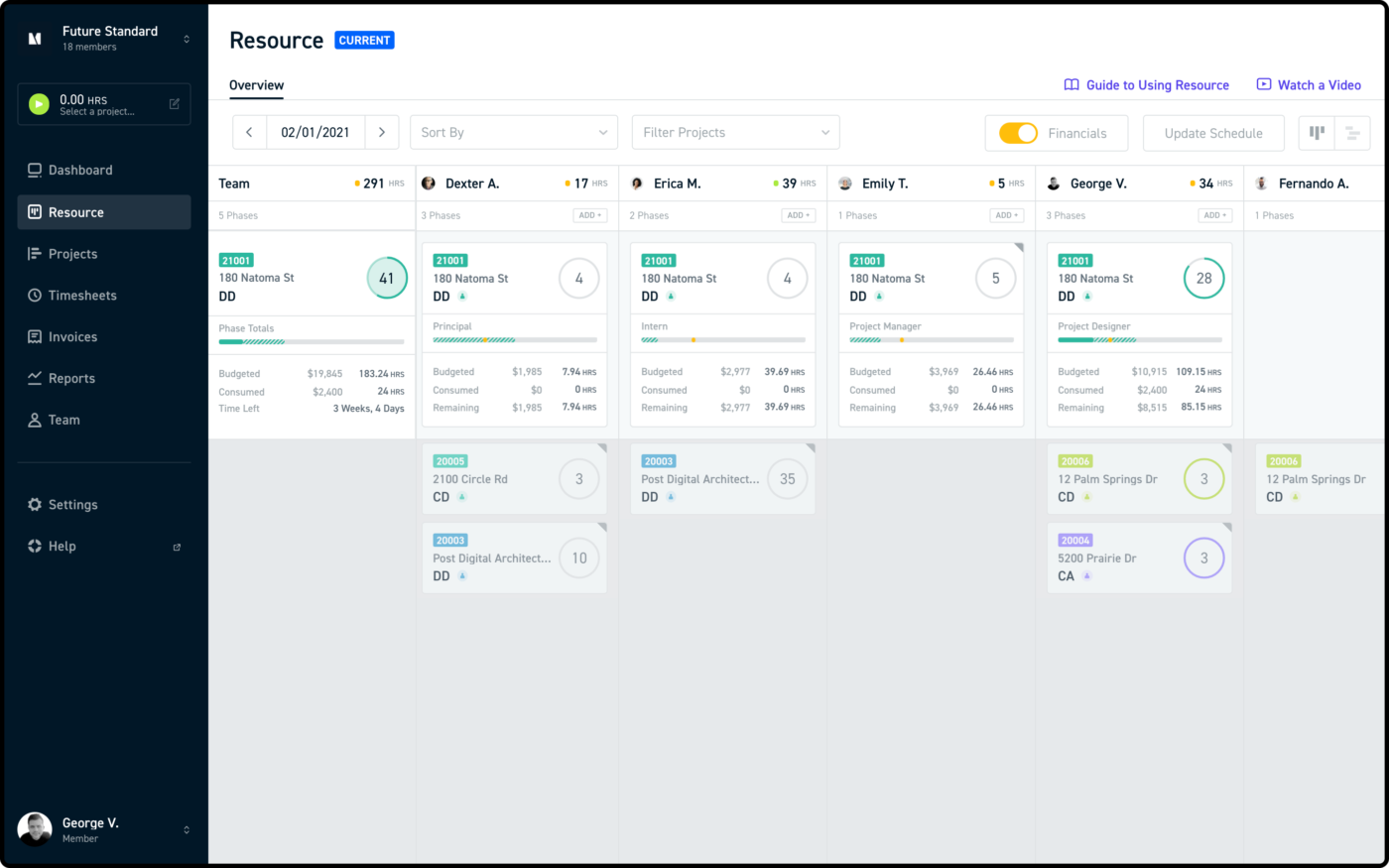
Meeting with Saartje van der Made, the project architect of the new “Dutch Charity Lotteries office building” and partner at Benthem Crouwel Architects. Saartje is sharing how involving the employees in the design of the interior has brought dynamism and made the building feels like a home.
Could you tell us a little about your professional journey? Where are you from?
My name is Saartje van der Made. After graduating cum laude in architecture at TU Delft, I immediately started working here at Benthem Crouwel architects. I became a partner/co-owner 5 years ago and I run the agency together with three other partners.
What was the project design brief for the “Dutch Charity Lotteries office building”? What was most important for you when planning this project?
The Charity Lotteries has grown to 600 employees in about 25 years. They were located at the Vondelpark in Amsterdam, spread over several stately mansions. They were ready to work in 1 new building, which fits today’s requirements, but very attached to their beautiful natural environment.
To help them make the big step to the business district Zuidas, we designed a building that has the same quality as real nature has: large, artificial foliage covers the entire plot and connects the existing renovated building with the new small volumes built on top. It lets in and filters daylight so that an ever-changing shadow pattern adorns the building.
By also involving the employees in the design of the interior, the building has been given a dynamic atrium and the office building feels like a home.
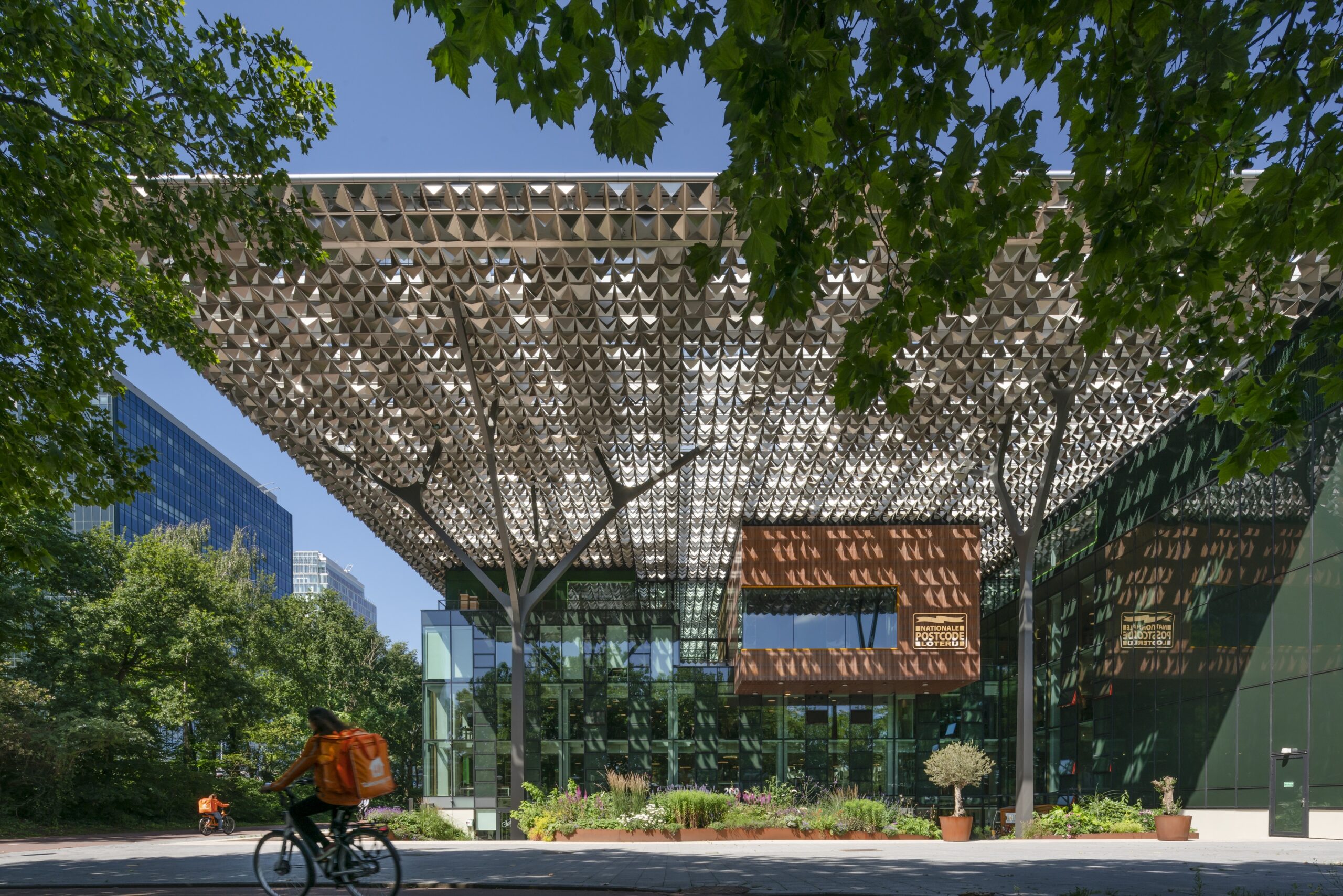
How would you describe your role in this project?
As a project architect, it was my mission to design a custom building for this organization and to guide them in the process. By occasionally taking a step back in the design process and giving room for their personal ideas, the building has become a result of both our visions.
What were the biggest challenges you and your team faced?
The promise to guide and involve all board members and employees in the design process and yet to design the most sustainable renovated building in the Netherlands.
Can you please share with us what winning the “Architectural Design of the Year” prize means to you?
It means that we have succeeded in our mission to satisfy the users and radiate that to others: a great recognition of our expertise!
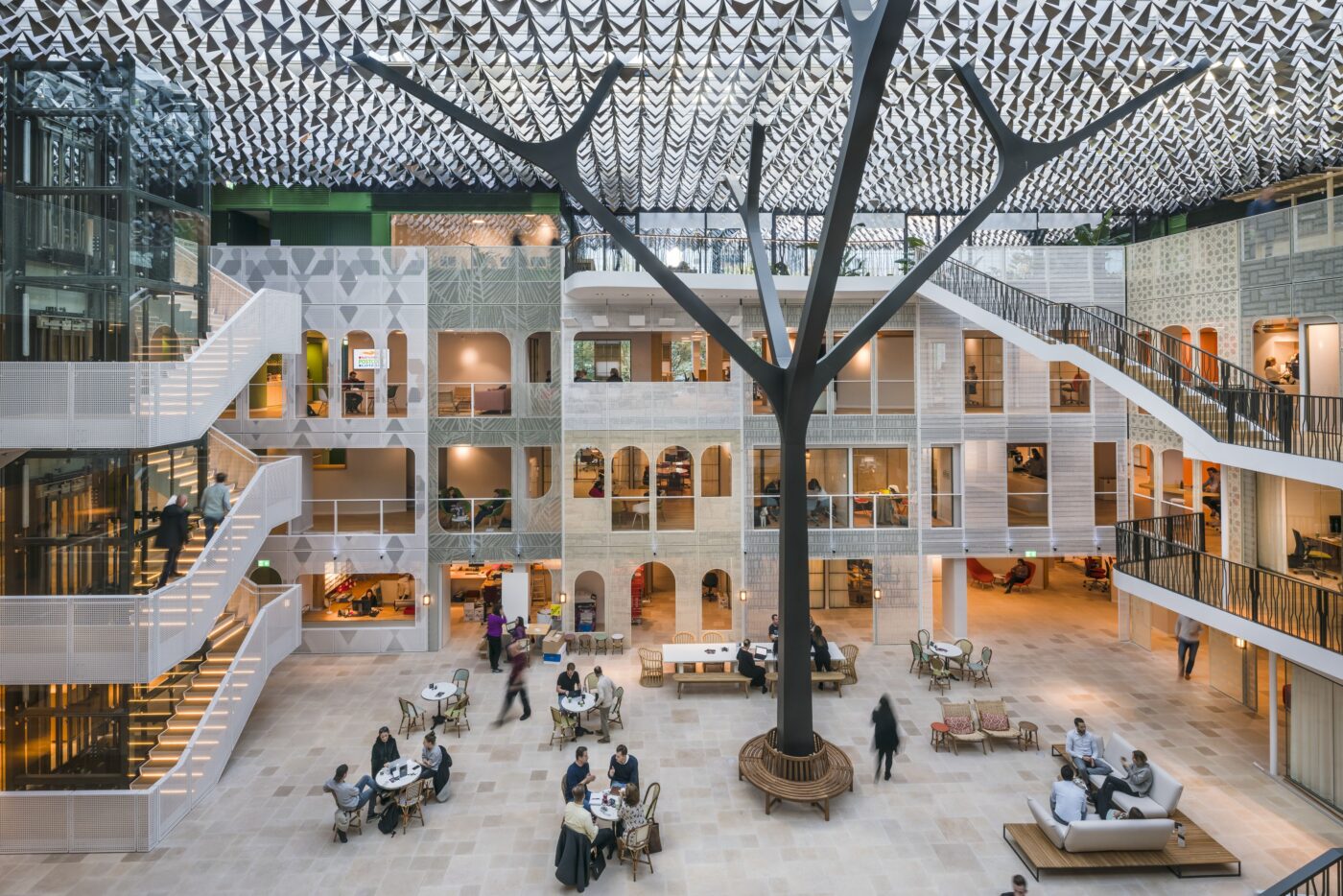
In general, what is your guiding design principle?
My mission is to design buildings that generate a feeling of happiness. That sounds simple, but taking into account aspects such as regulations, financial budget, client’s wishes, government agencies, climate, and sustainability, it is always an immense challenge. The task for us as architects is to be able to place yourselves in the user’s experience and try to give the place a function and meaning.
Last, what can we wish you for in the future?
Much more creativity and surprising projects with inspiring clients who also push the boundaries of architecture.
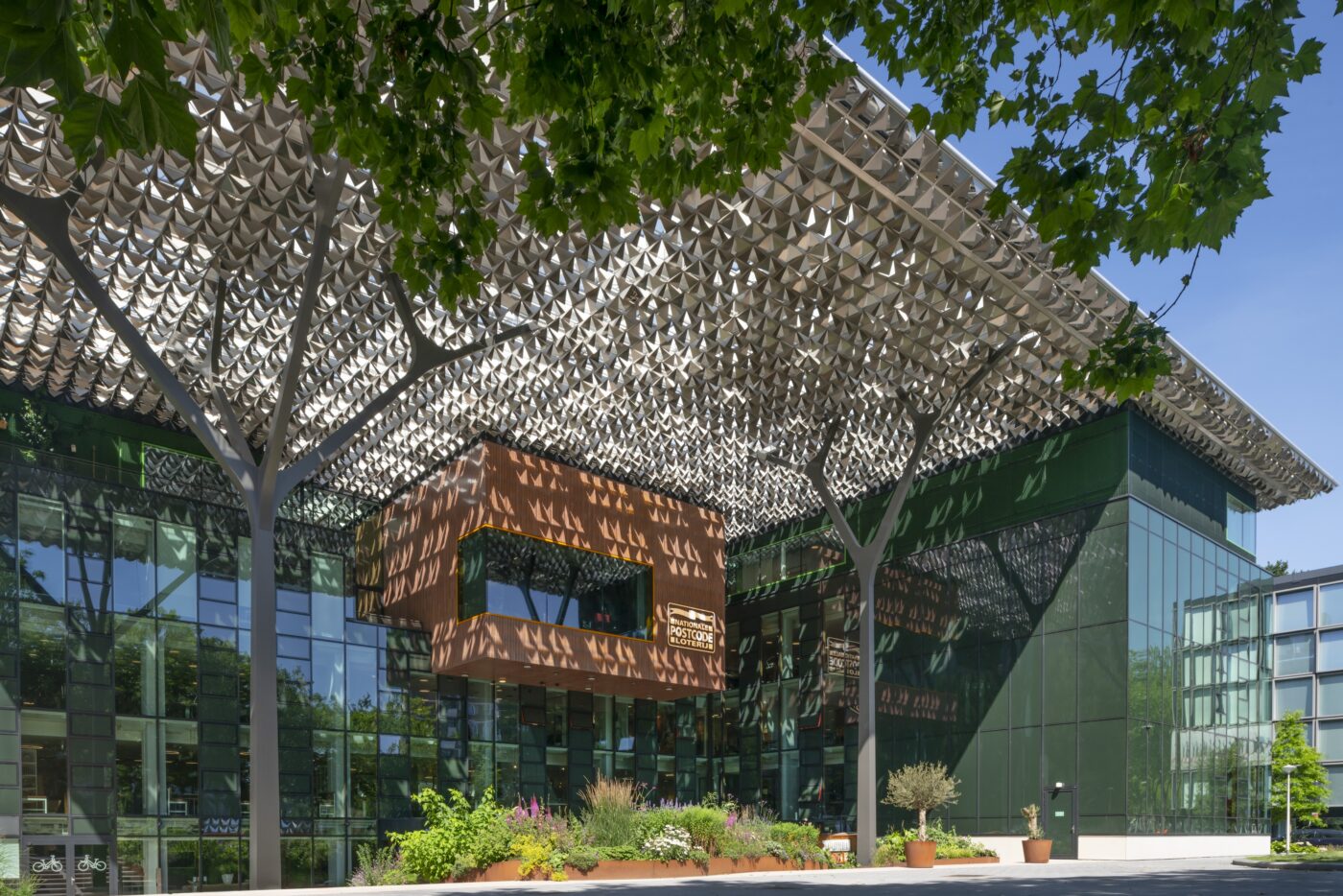
Journalist specialized in architecture; Marie Crabié is working for the webzine tema.archi. Launched in 2017, Term.archi is an online magazine promoting Architecture and Urban landscape. Marie is sharing with us, her interest in architecture and the importance of involving professionals and design enthusiasts to build the city of the future.
Can you tell us a bit about yourself and your background? Where are you from?
I first studied political sciences in Lille, in the very north of France than in Toulouse ( south of France) before moving to Paris. I had the opportunities, through my studies to travel to Malaysia and to Montreal, Canada where I had my first working experience in a radio show where we would address social and cultural topics. I found myself really interested in culture, which I then intended to deepen through my studies in Paris. My master in cultural journalism allowed me to start covering architecture news, which I am now doing for 3 years.
What has drawn you to work in the media industry? Why did you choose to be specialized in Architecture?
I first chose to work in the media industry for one reason, and I really like to hear or share people’s personal stories. Culture became a matter of importance to me, as it is a domain in which time is not at stake — compared to political news for instance. A domain in which you have an opportunity to broader your views and open it to a large public. Architecture is one of those fields that people tend to be afraid of. Especially in France as it tends to be exclusive of professionals. My point with architecture is to open it to a large public, to allow people to think about architecture from their perspective depending on who they are and where they are from so that everyone makes their own opinion about our built environment. That is one way, to me, to build together an inclusive world.
You are a journalist for tema.archi, an online magazine promoting Architecture and Urban landscape. What is the main audience of the platform? What is the focus of the webzine?
The webzine focus is literally to open architecture to everyone, to specialists (architects, landscapers, students, etc.), and to people who are not necessarily working in that field but who have the desire to learn about architecture, urbanism, construction, etc. Topics that we are all concerned about or should all feel concerned about.
Where does tema.archi stand in regard to sustainable development?
At tema.archi, we think that sustainable development stands and works if people understand why we need to follow that direction. We try to explain sustainability by showing examples, looking at innovation, and providing proof that we can build differently, using new processes, and having another perspective on the industry.
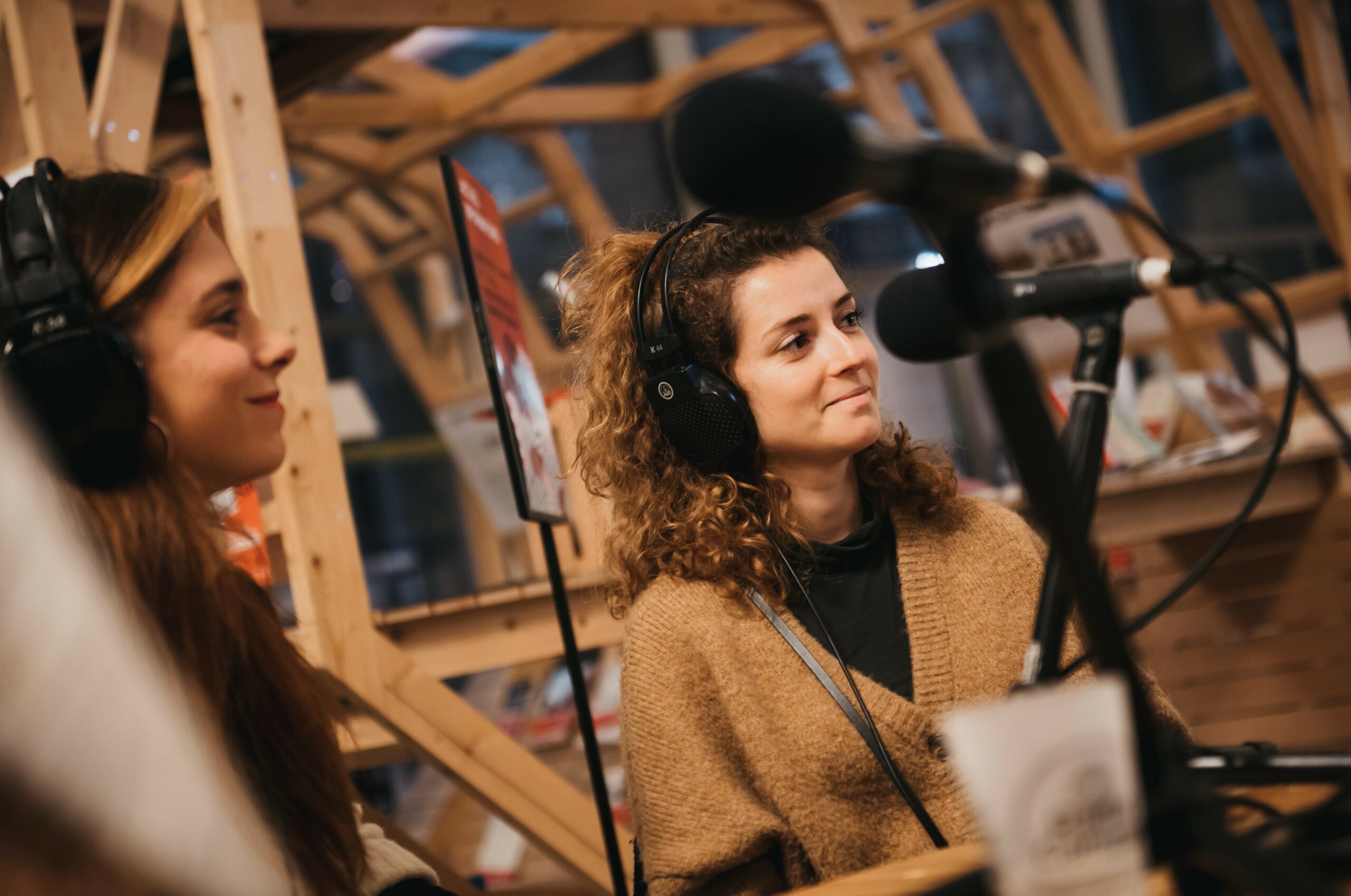 Radio Campus show during the 5th Biennale of le Réseau des maisons de l’architecture, November 2021 © Claudia Mollard
Radio Campus show during the 5th Biennale of le Réseau des maisons de l’architecture, November 2021 © Claudia Mollard
What are you working on at the moment, and do you have any upcoming projects or collaborations that you’re able to tell us about?
We are working on a new format, videos, podcasts, probably short shows that would again, allow people to access easy information, without technical considerations, or if so, this information needs to be explained.
Have you noticed any new trends in Architecture and Interior Design?
I would say that biobased and reused materials are now trending, we are only at the beginning of the sustainable revolution.
Last, what can we wish you for 2022?
That more people find an interest in architecture! Thinking more about architecture is the key to building it better!
Kamille Glenn is a multidisciplinary designer born and raised in Brooklyn, NY by way of the West Indies. Her design focuses comprise interior, architecture & furniture design although her passion for the built environment spans across all maker disciplines. Though passionate about design, she noticed the lack of representation early on in her career. As a response, she founded the dsgnrswrkshp (pronounced designer’s workshop), a collective established to empower the underrepresented Black makers in design. Her mission with this community is to bridge gaps, curate a safe and relatable space, as well as promote Black business and entrepreneurship within design. Kamille is sharing her professional journey and the foundation of dsgnrswrkshp in 2019 to empower the underrepresented Black makers in design.
Can you tell us a bit about your background? Where are you from?
I’m a multidisciplinary designer born and raised in Brooklyn, NY by way of the West Indies. My design focus comprises of interior, architecture & furniture design although my passion for the built environment spans across all maker disciplines. As a former associate at Rockwell Group in New York City, there, I had the pleasure of taking on some of the most interesting design challenges and contributed to several groundbreaking projects alongside incredible designers, artisans and craftsmen.
In noticing the lack of representation in design early on in my career, I founded the dsgnrswrkshp (pronounced designer’s workshop) as a response. The collective was established with the goal to empower the underrepresented Black makers in design. My mission with this community is to bridge gaps, curate a safe and relatable space, as well as promote Black business, education and entrepreneurship within design. Prior to designing and community building, I received my Bachelor of Fine Arts in Interior Design from the Fashion Institute of Technology and freelanced in experiential
design.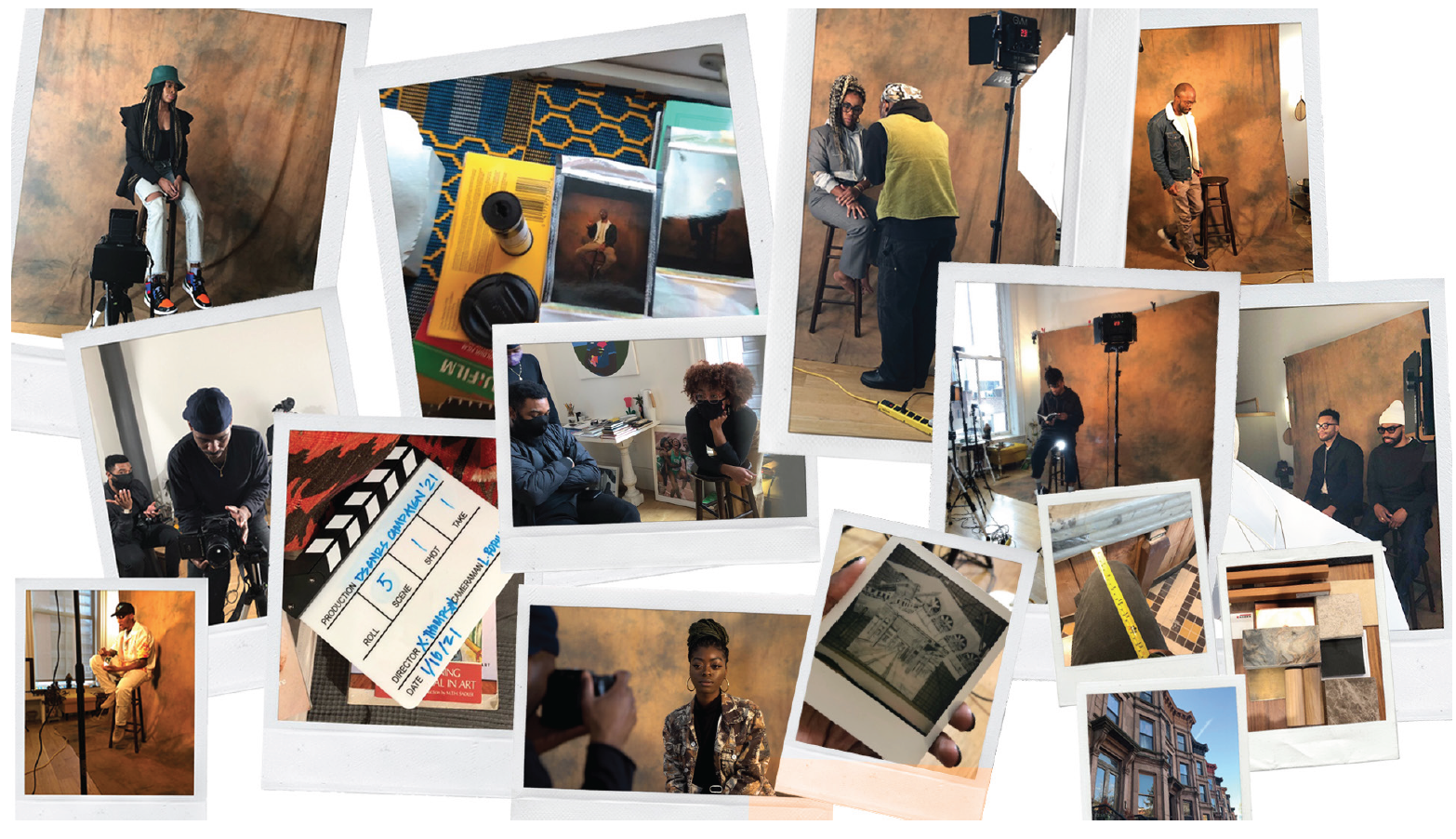 When did you start working in the “Design World”? What is your best memory from the first years of your career?
When did you start working in the “Design World”? What is your best memory from the first years of your career?
I’m going on my ninth year of my design journey. My best memory would have to be my first site visit. I was working on an international project in Lisbon, Portugal. It was my second time in Europe and at the time, work travel felt so foreign. It was an absolute dream.
In general, what are your guiding design principles?
I’d say I have three. Research, first and foremost. I work on a lot of international projects reflecting foreign cultures and communities. As a Black woman who often experiences appropriation of my culture, my top priority is accurately and respectfully representing others through my work. Second, create a sense of place. Whether it be a restaurant or hotel, new businesses, location has a purpose and existing culture that should be reflected and embraced, it’s welcoming. Lastly, details matter, down to the doorstop!
You have founded the “dsgnrswrkshp” (pronounced designer’s workshop), a collective established to empower the underrepresented Black makers in design. When did you start this new community/project and what kind of support do you provide?
I started dsgnrswrkshp in 2019 but it was an idea that started forming during my senior year at F.I.T. five years prior. Transparently, I longed for community and support I couldn’t find in design. Creating community in support of the Black maker in design is only one part of the mission. In support of community building, our programming includes curated conversations, social events, community service, field trips, and more that engage design, arts, education, and healing. In February, we hosted VISIBILITY x DSGN, our largest event which gave Black makers the platform to share uninterrupted dialogue on various topics in design, allowing us to be transparent but most importantly heal. Design can be a filling but very draining space, we don’t acknowledge that enough. Our end goal is to support makers throughout their design journeys beginning with pre-college. To do so, we’re building our membership & partnership packages with resources we are so excited to share in 2022.
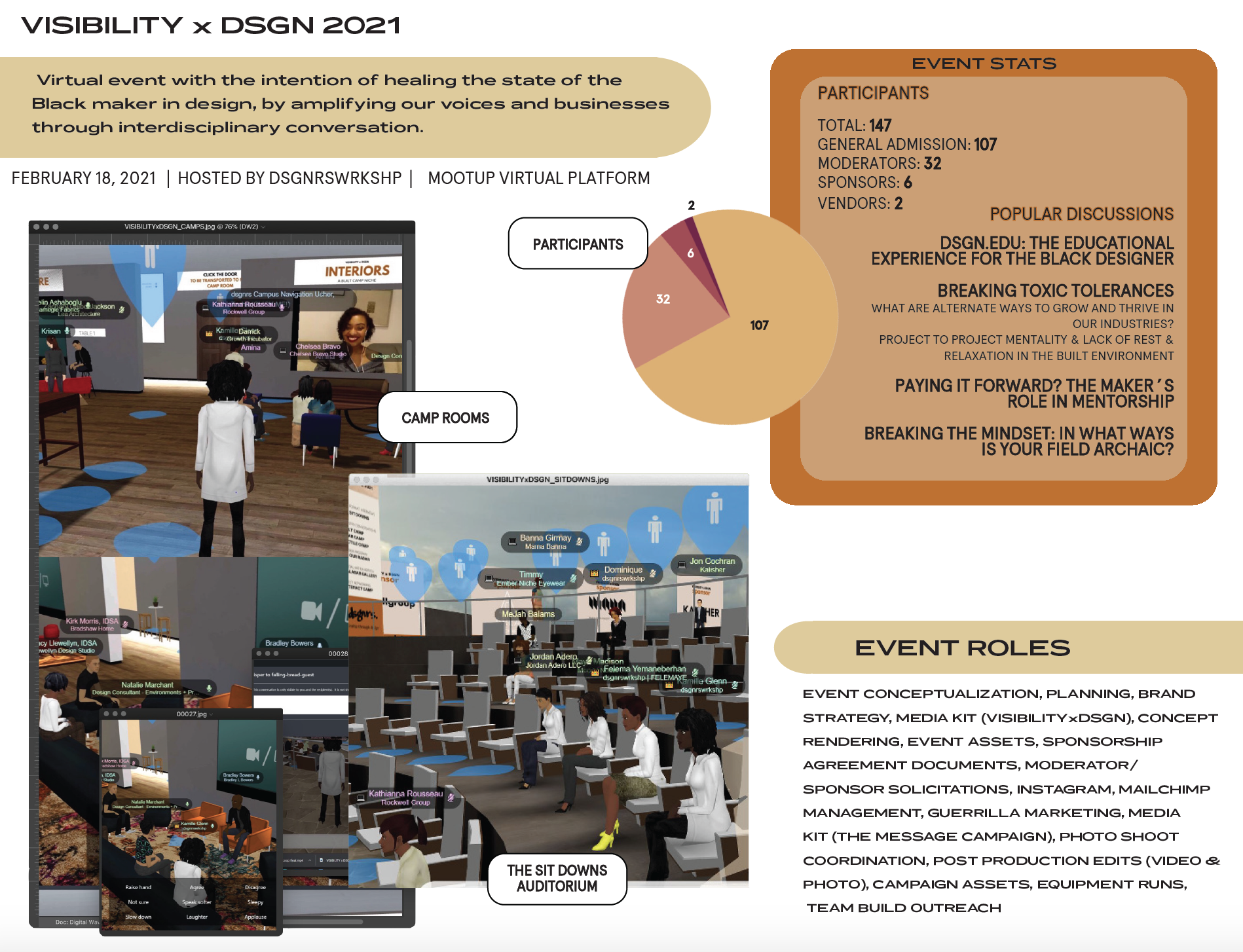 How can designers be involved with “dsgnrswrkshp”?
How can designers be involved with “dsgnrswrkshp”?
Our collective growth is a community effort, there are so many ways to get involved! First, you can stay connected with us by signing up for our newsletter and following us @dsgnrswrkshp on all platforms, there you’ll find content by incredible Black makers, collective events, and more. If you’re a Black creative, join our space as we grow collectively, volunteer for our resource-sharing events, campaigns and features. We encourage our allies to engage with us by sharing this space with their Black design peers and fellow allies. As well as educating themselves on collective content and Black-owned businesses. Keep a lookout for our 2022 features! Lastly, this is a community-powered space in all forms, we greatly appreciate donations via our website!
What are you working on at the moment, and do you have any upcoming projects or collaborations that you’re able to tell us about?
Outside of the membership building, we’re really excited for VISIBILITY x DSGN 2022 and our next design campaign slated for this summer.
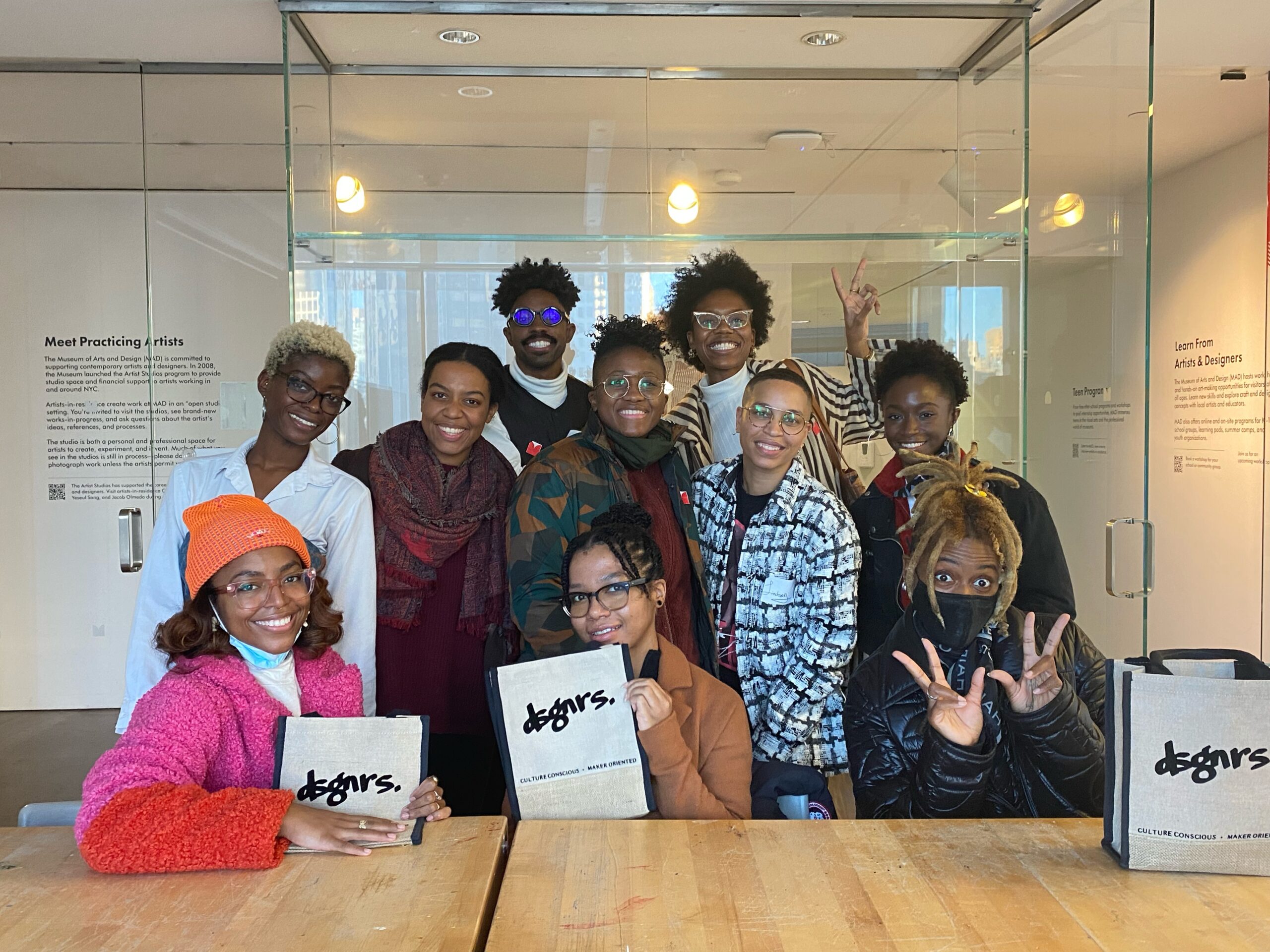 What can we wish you for 2022?
What can we wish you for 2022?
Expansion and funding! We’re growing organically and beautifully, and intend to keep up the momentum.
Last, do you have any tips for aspiring Designers?
My life’s motto is to stay curious, if you follow your curiosity you’ll remain open to all the opportunities that flow your way. You must follow, though!
More information on dsgnrswrkshp website and Instagram.
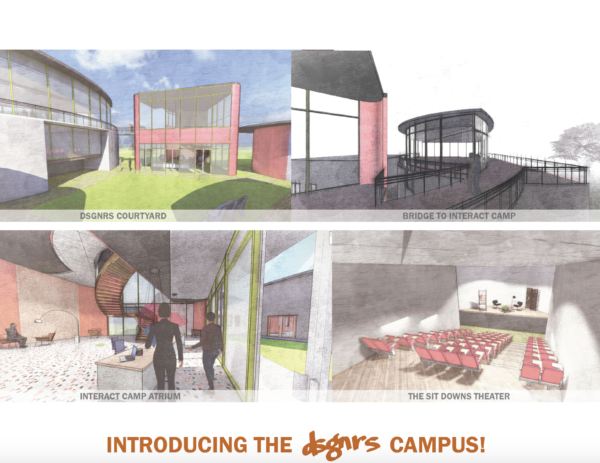
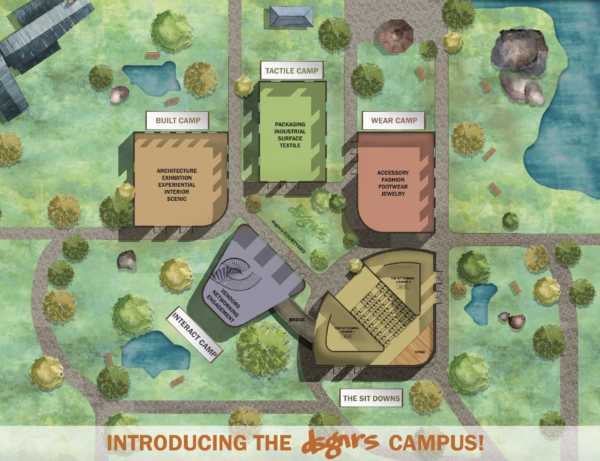
Zhike Wang & Xiaoshui Li, designers of FOSHAN TOP WAY DESIGN have recently won the “Interior design of the year 2021” of the first edition of the BLT Built Design Awards with their exhibition design. We had the chance to seat with them, learning more about the creative process of their design called “Naturalism Creates a Magic Wonderland”.
Could you tell us a little about your professional journey?
Zhike Wang & Xiaoshui Li – We were college classmates, and in 2002, only two years after graduation, we co-founded Foshan Topway Interior Design Co., Ltd.
Now, for the last 20 years, we have been engaged in commercial space design, mainly designing headquarters buildings, interior exhibition halls, and office spaces for some enterprises.
How/when did you discover that you wanted to work in design?
Actually, our love for design started more than 20 years ago… At that time, we were both studying painting. Coincidentally, we started to learn about architectural design and interior design, which belong to the same category of art, and we decided to choose space design as our major. This is how we got to know each other at the university and we became classmates.
What was your inspiration to create this “Wonderland”? What material did you use to build the structure of the exhibition?
The creative inspiration for this project came from a trip to the United States with our family. We were lucky enough to visit The Antelope Valley, which has won numerous awards in photography exhibitions. This magical experience brought us a unique sense of nature and beauty.
We were inspired by all the natural elements of this site, from the sun, moon, stars, rivers, canyon rock walls, bridges, and waterfalls. They all touched our hearts, so we wanted to integrate these elements into our design. This “space” is an enterprise exhibition hall focused on customized metal. The entrance, stairs, and walls of the exhibition hall are made of stainless steel and are hand polished with different textures. This material has a very strong sense of “futuristic design,” where science and technology merge under the reflection of light.
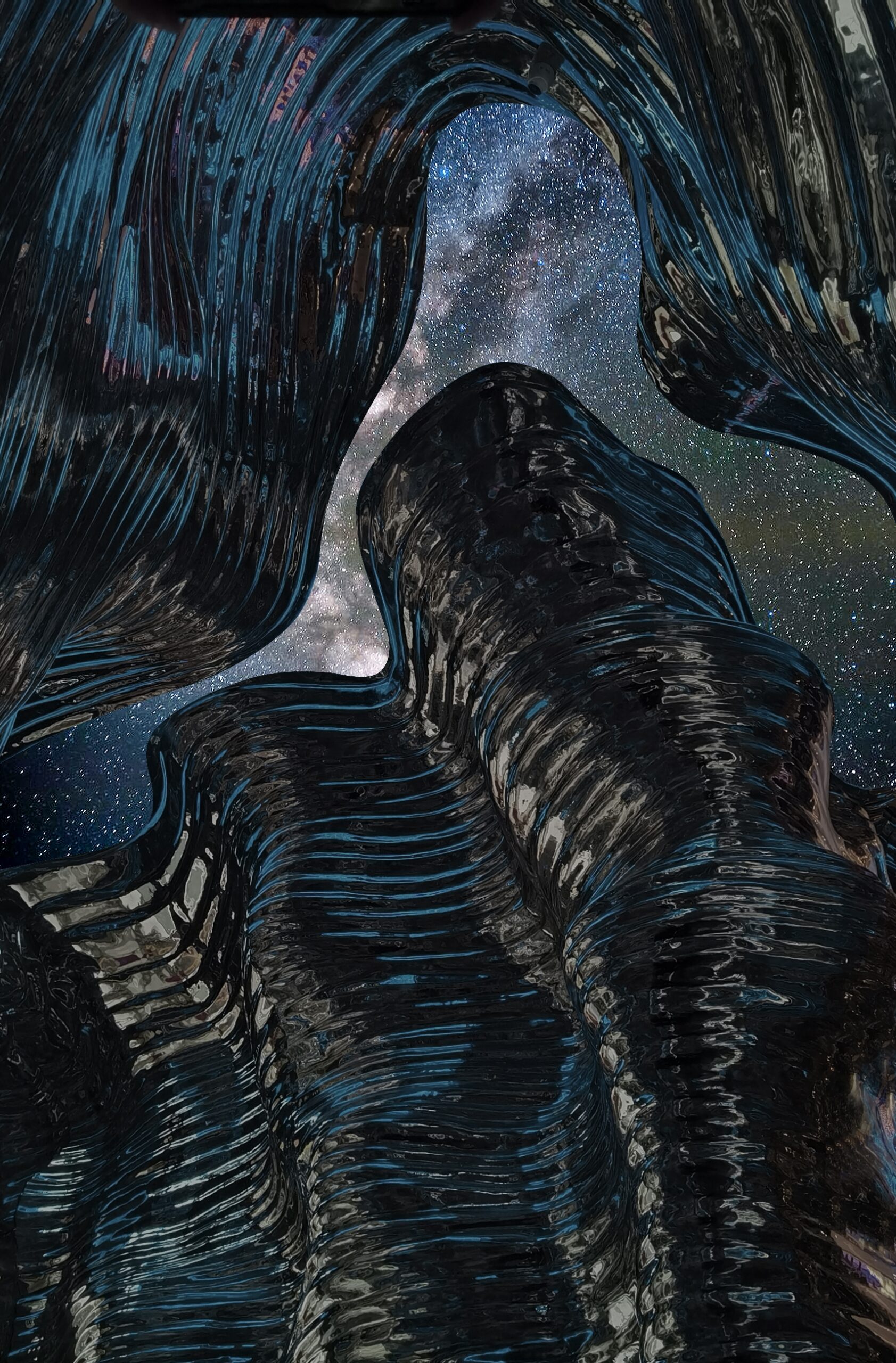
What was most important to you when planning this project?
When we were planning this project, we focused on how to combine natural elements with metal and lighting, and how to express the beauty of the space while deeply displaying the products, using all the space allocated to our design.
How would you describe your role in this project?
As designers of the project, we were like scriptwriters building an immersive space or directors organizing and executing the whole project.
We had to experiment and make many attempts before we found the right artistic application that we thought was right for the metal structure. We had difficulties persuading the owners to adhere to the original design, and how this artistic realization would bring commercial value.
Where do you get the motivation and inspiration for your work?
Our work is motivated by our love of design itself, as well as by challenging projects! Our inspiration comes from our passion for and observation of life, our genuine curiosity, and how we think about caring for humanity.
In general, what is your guiding design principle?
In general, our design guidelines are as follows: Firstly, it should be a design with a modern aesthetic feeling, and secondly, it should have a sense of art that resonates and touches the heart. Last but not least, it must meet the demands of users from different perspectives!
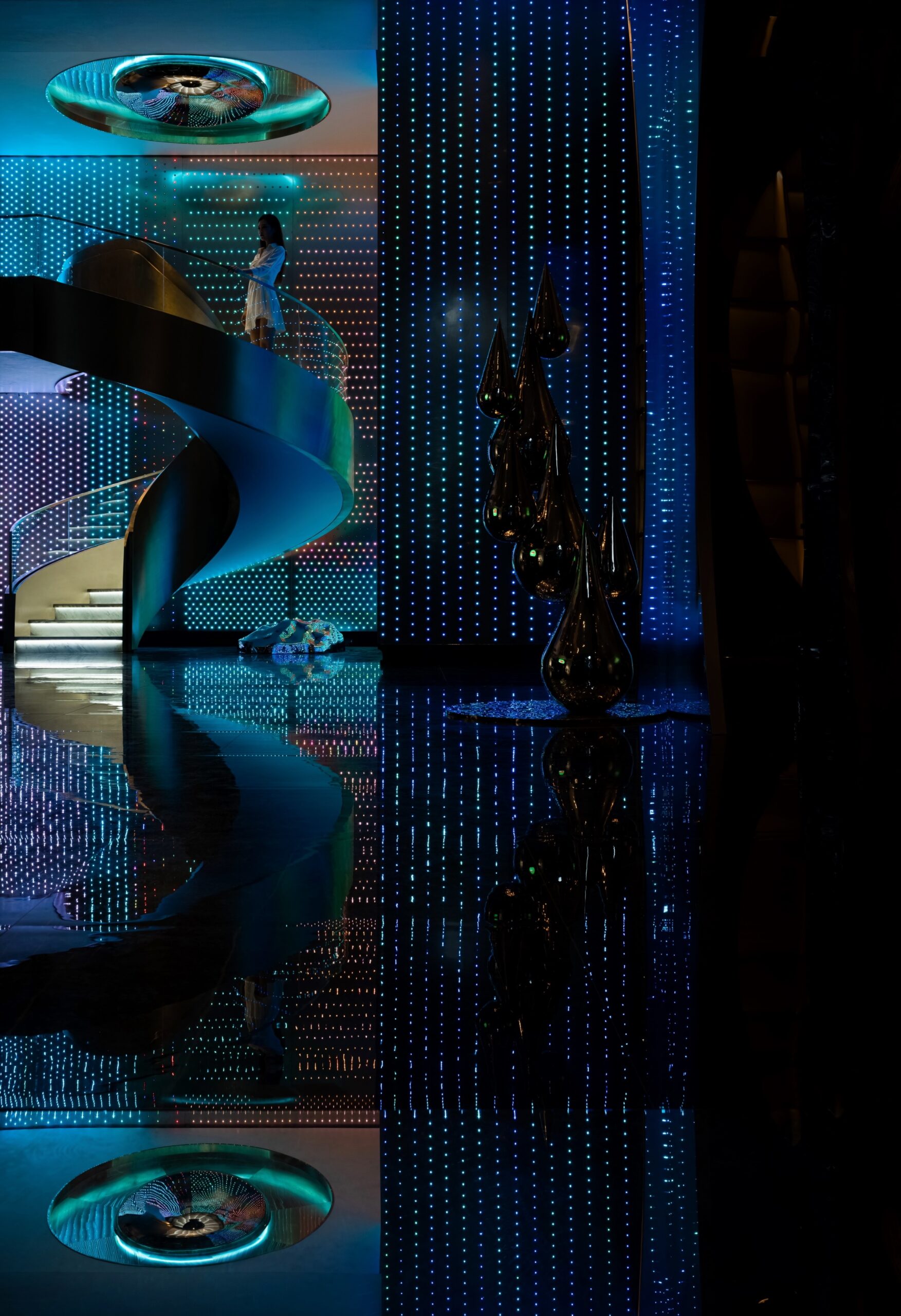
Lastly, what would be your best advice for young, talented interior designers?
For talented young designers, our advice is to keep doing what you think is right and take concrete steps! Never stop learning from your surroundings; connect and try to understand the world, then think about your own design methodology.
Finally, you should constantly improve your aesthetic vision and design abilities in all industries.

The company’s key mission is to promote design through awarding great designs, exhibiting, developing designers and artist communities, providing networking opportunities, and advancing the appreciation of excellence in design through education, outreach, and grants.
Developed by Hossein Farmani and Astrid Hébert, 3C Awards is part of a larger organization Three C Group GmbH based in Switzerland and specialized in Awards, Marketing, Media, and Events. 3C Awards represent today’s diversity and innovation in Lighting Design, Furniture Design, Interior Design, and Architecture. Each brand is a symbol of design excellence around the world, showcasing Professional and Emerging designers’ work to over 100 expert jury members. 3C awards is part of Three C Group GmbH, a Swiss-registered company based in Grabenstrasse 15a, 6340 Baar, Switzerland. More information is available on: www.3Cawards.com
Under the company Three C Group GmbH, 3C Awards will play a key role to develop our footprint in Europe and support the growth of our programs:
Three C Group GmbH is a sister company to Farmani Group, founded by Hossein Farmani. Farmani Group is a leading organization curating and promoting photography, design, and architecture across the globe since 1985.
The Farmani Group is responsible for many successful awards around the globe. Farmani Group organizes the International Design Awards (IDA), Architecture Masterprize, DNA, Paris Design Awards, London International Creative Awards, Prix de la Photographie in Paris, and the Annual Lucie Awards for Photography, which has emerged as one of the world’s most prestigious awards.
If you would like more information in regards to the program and our company, please contact: astrid.hebert@threec.group
The Winners of the 1st Edition of the BLT Built Design Awards have been revealed!
The program is becoming a global reference in the construction industry, representing the best of 2021 Architecture, Interior Design, Construction Product Design and Project Management.
Los Angeles, CA – The renowned Farmani Group, along with 3C Awards, is pleased to formally announce the winners of its first edition of the BLT Built Design Awards.
BLT Built Design Awards recognized the expertise of all professionals involved in the realization of outstanding projects; from Architecture firms, Interior design experts to construction products, and project management.
The prize encompasses all forms of buildings, projects, and infrastructures that cope with today’s urbanization challenges and inspire the next generations. This annual program aims to celebrate Projects, People, and their passion for the industry, through our rigorous judging process, we recognize those that have gone above and beyond.
The submissions for the 1st edition of the BLT Awards closed end of September 2021, leaving the jury panel composed of 40 experienced architects, designers, developers, academics and media representatives to select winners in each category. The program received over 450 submissions from 54 countries in the first year alone.
“Through the BLT Built Design Awards, we aim to focus on celebrating projects, people and their passion for the construction industry. This is one of the most inclusive and comprehensive programs in the field.” said co-founder and Program Director, Astrid Hébert. “We aim to raise awareness to all professions involved in the realization of new infrastructures as well as encouraging young and emerging talents”.
On Saturday 13th of November, Mr. Hossein Farmani, Founder of Farmani Group and Ms. Astrid Hébert, Program Director have announced the winners: Benthem Crouwel Architects with The Dutch Charity Lotteries office won the “Architectural Design of the Year”, Foshan Topway Design with the exhibition “Naturalism creates a magic wonderland” was awarded ” Interior Design of the Year”, Tubmarine/Kebony for The Tubmarine and Kebony wood received the “Construction Product of the Year” while the company Monograph won the “Project Management of the Year” for Resource by Monograph.
In the student section, Mariam Abbadi received the Emerging Architect of the Year title, and Lu Kuan-Ju was awarded the “Emerging Interior Designer of the Year” prize.
About the BLT Built Design Awards:
Farmani Group and 3C Awards assembled BLT Built Design Awards to bring more attention to all professionals involved in the realization of outstanding projects.
The BLT Built Design Awards is a sibling program of the LIT Lighting Design Award (LIT), The International Design Awards (IDA), and The LIV Hospitality Design Awards, all focusing on Architecture, Interior Design and Lighting, which have emerged as some of the most well-known Design Prize today.
3C Awards, a leading organization curating and promoting design across the globe. 3C Awards is part of a larger organization called 3C Group based in Switzerland and specialized in Awards, Marketing, Media, and Events. 3C Group is a sister company to Farmani Group, founded by Hossein Farmani.
On Saturday 13th of November, Mr Hossein Farmani, Founder of Farmani Group and Ms Astrid Hebert, Program Director have announced the winners: Benthem Crouwel Architects with The Dutch Charity Lotteries office won the “Architectural Design of the Year”, Foshan Topway Design with the exhibition “Naturalism creates a magic wonderland” was awarded ” Interior Design of the Year”, Tubmarine/Kebony for The Tubmarine and Kebony wood received the “Construction Product of the Year” while the company Monograph won the “Project Management of the Year” for Ressources by Monograph.
The event is hosted by Mr Hossein Farmani, President of Farmani Group and Ms Astrid Hebert, Director of 3C Awards, both co-founders of BLT Awards.